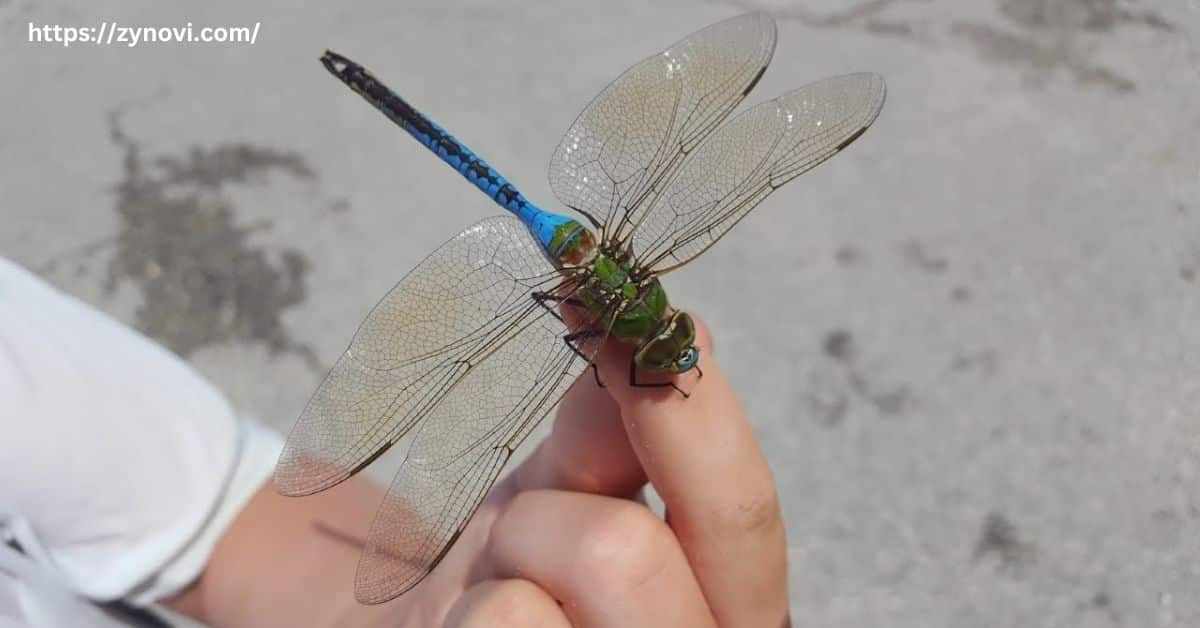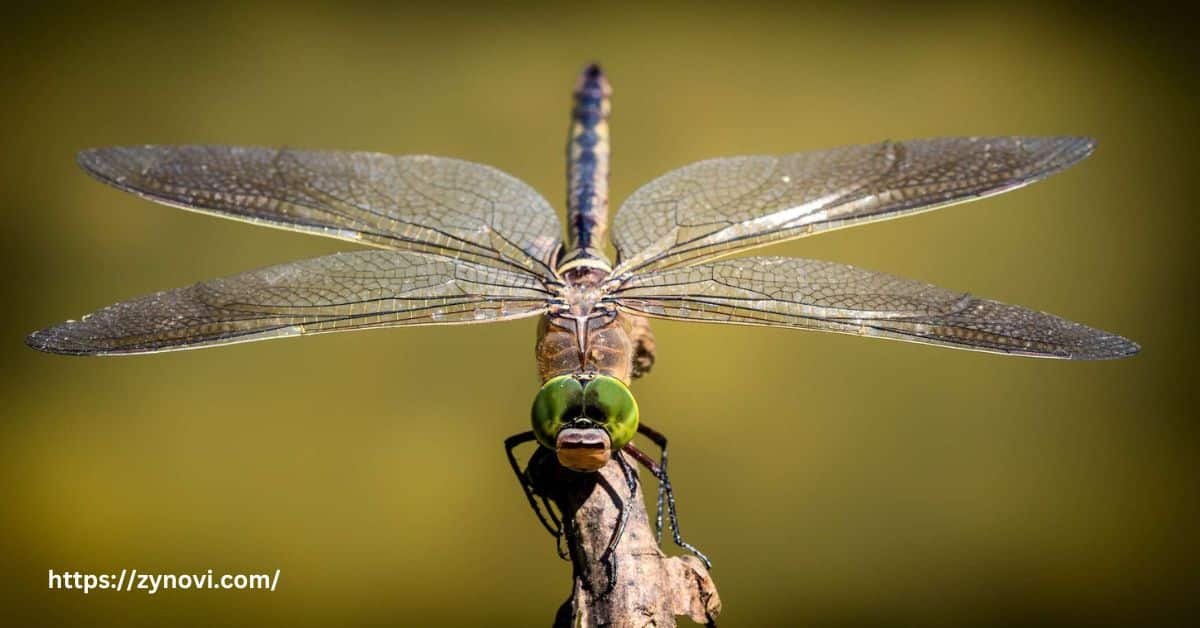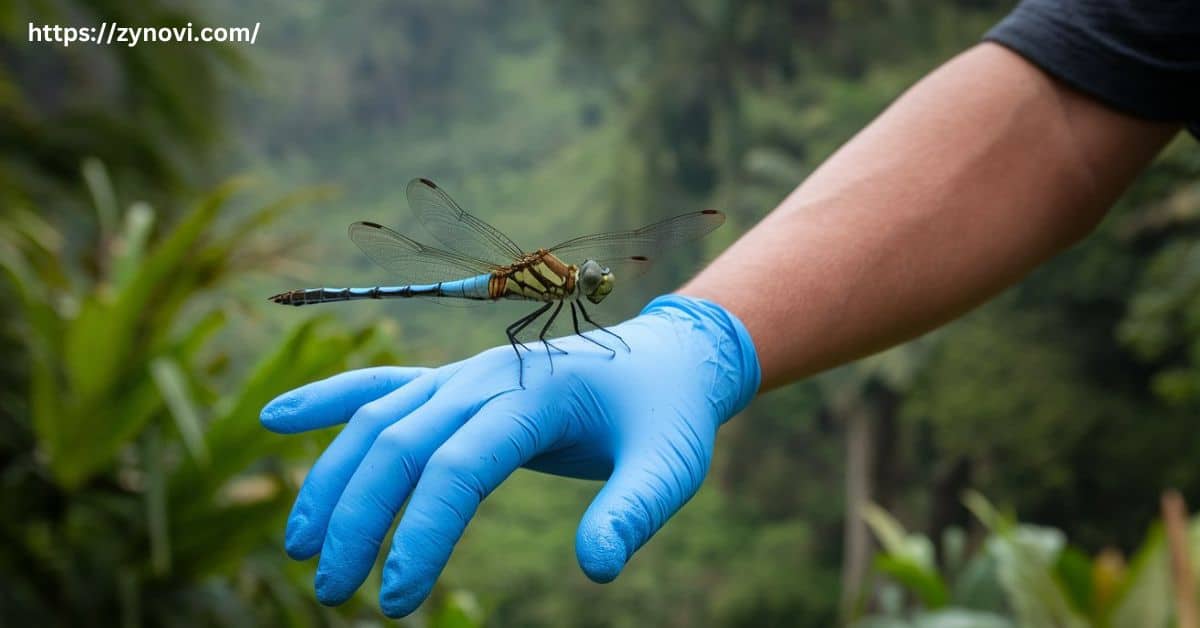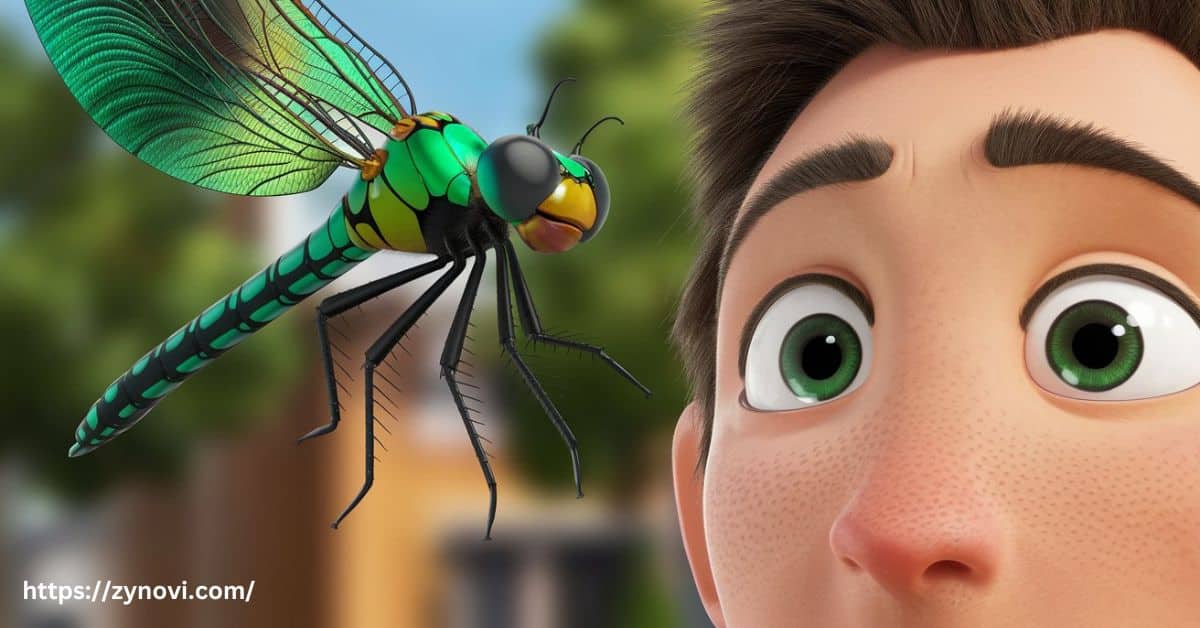Do dragonflies attack humans? Dragonflies do not attack humans; they are harmless and pose no threat, instead they hunting smaller insects.
If you’ve ever had one zip past you with lightning speed, you might wonder if these aerial acrobats are as menacing as they seem. Their large multifaceted eyes, swift movements, and needle-like bodies often give rise to myths and fears. But is there any truth behind these misconceptions? You’re about to uncover the reality behind these fascinating creatures.
Get ready to dive into a world of dragonfly myths, behaviors, and surprising facts. From their harmless curiosity to their vital role in pest control, you’ll discover why dragonflies deserve your admiration, not your fear.
What Are Dragonflies?
Dragonflies belong to the order Odonata, a group of insects that have existed for over 300 million years. These ancient predators are not only fascinating but also ecologically important.
Overview of Dragonflies
| Category | Details |
|---|---|
| Scientific Classification | Kingdom: Animalia, Phylum: Arthropoda, Class: Insecta, Order: Odonata |
| Distinction | Unlike damselflies, dragonflies rest with wings spread flat and have broader, powerful bodies. |
| Species Count | Over 5,000 species worldwide |
Global Distribution: Dragonflies thrive in diverse habitats across the globe, particularly near water sources such as: Ponds, Lakes, Rivers and Marshes
Physical Characteristics of Dragonflies
Dragonflies’ anatomy equips them for predation and survival. Their unique physical features include:
| Feature | Description |
|---|---|
| Iridescent Wings | Transparent and capable of independent movement. |
| 360-Degree Vision | Large multifaceted eyes covering most of their head. |
| Powerful Jaws | Mandibles designed for crushing prey. |
| Long, Slender Bodies | Streamlined for speed and agility. |
Flight Abilities
- Hovering: Dragonflies possess the unique ability to hover mid-air, enabling them to hunt smaller insects with exceptional precision.
- Speed: These agile fliers can reach speeds of up to 30 miles per hour, making them one of the fastest insects.
- Agility: With the ability to perform sharp turns, hover, and even fly backward, dragonflies showcase incredible aerial maneuverability.
Habitat and Behavior
Preferred Environments
Dragonflies depend on aquatic ecosystems for their survival, particularly during their nymph stage when they live underwater. Common habitats include:
- Still waters like ponds and lakes: These provide a calm and stable environment for dragonfly nymphs to thrive, offering abundant food sources and shelter.
- Flowing waters such as rivers and streams: The continuous movement of water in these habitats ensures oxygenation, which is crucial for the survival of aquatic nymphs.
- Wetlands and marshes: These rich ecosystems support a diverse range of insect prey and vegetation, making them ideal for dragonflies to hunt and reproduce.
Hunting and Feeding Behavior
Dragonflies are apex insect predators, demonstrating remarkable hunting efficiency. Key aspects of their feeding behavior include:
- Prey: Mosquitoes, flies, and other small insects: Dragonflies play a crucial role in controlling populations of these insects, especially pests like mosquitoes that can spread diseases.
- Method: Capture prey mid-air using their legs and powerful jaws: Their legs form a basket-like structure to trap prey, and their strong jaws allow them to consume their catch instantly, often without landing.
Do Dragonflies Attack Humans?

Myth vs. Reality
A common misconception is that dragonflies attack humans. In reality:
No Physical Attributes for Attacks: Dragonflies do not possess stingers or venom, making them incapable of inflicting harm. Their anatomy is designed for hunting small insects, not attacking larger creatures.
Harmless Nature: Dragonflies are non-aggressive and exhibit no interest in humans as threats or prey. Their interactions are entirely benign.
Curiosity: When dragonflies approach humans, it is often out of curiosity or because they mistake moisture, such as sweat or water droplets, for a suitable water source.
Dragonflies Interaction with Humans
Landing on People: Occasionally, dragonflies may land on humans, usually mistaking them for a stable resting spot or being curious about moisture on the skin.
Harmless Bites: If handled carelessly, dragonflies may bite as a defense mechanism, but their bites are mild, painless, and pose no danger.
People Think That Are Dragonflies Dangerous?
Appearance and Size
Large Size and Swift Flight: Dragonflies relatively large size, combined with their rapid and agile flight patterns, can be intimidating to some people, giving the false impression that they are aggressive or dangerous.
Multifaceted Eyes and Quick Movements: Their enormous compound eyes, which cover most of their head, and their rapid darting movements can make them seem like they are watching or targeting humans, although this behavior is purely instinctive and harmless.
Folklore and Myths
Throughout history, dragonflies have been both feared and revered:
Negative Myths:
- “Devil’s Darning Needles”: In certain European folklore, dragonflies were feared as sinister creatures that could “sew shut” a person’s eyes, mouth, or ears as punishment or mischief. While this is entirely untrue, such myths created an aura of fear around these harmless insects.
- “Horse Stingers”: Dragonflies were mistakenly believed to sting horses, likely due to their tendency to hover near animals to catch flies. Despite the name, dragonflies lack stingers and are completely harmless to horses and humans alike.
Positive Symbols:
- Japanese Culture: Dragonflies are celebrated in Japan as symbols of courage, happiness, and renewal. They are often depicted in art and literature, reflecting their cultural significance.
- Native American Traditions: Many Native American tribes associate dragonflies with transformation, adaptability, and speed, recognizing their life cycle and incredible flying abilities as metaphors for personal growth and resilience.
Are Dragonflies Beneficial to Humans?

Dragonflies are invaluable allies in maintaining ecological balance and offering practical benefits.
Natural Pest Control
Dragonflies are voracious predators, capable of consuming hundreds of mosquitoes daily. This natural pest control reduces the need for harmful chemical pesticides, making them invaluable in maintaining ecological balance.
Indicator of Water Quality
The presence of dragonflies in an area is a strong indicator of healthy aquatic ecosystems. Their reliance on clean water for breeding and the nymph stage makes them excellent markers of environmental health.
Ecological Contributions
Here’s the information presented in table format:
| Aspect | Description |
|---|---|
| Natural Pest Control | Dragonflies consume hundreds of mosquitoes daily, reducing the need for harmful chemical pesticides and contributing to ecological balance. |
| Indicator of Water Quality | The presence of dragonflies signals healthy aquatic ecosystems, as they rely on clean water for breeding and the nymph stage, making them excellent markers of environmental health. |
Benefits for Gardens and Agriculture
Pest Control:
Dragonflies are natural predators of many crop-damaging insects like aphids, whiteflies, and mosquitoes. By reducing these pests, dragonflies help minimize the need for chemical pesticides, making gardening and farming more eco-friendly and sustainable.
Biodiversity Support:
Encouraging dragonflies in your garden enhances overall biodiversity. Their presence fosters a balanced ecosystem, supporting not only plant health but also attracting other beneficial creatures like bees and butterflies, which further contribute to pollination and ecosystem stability.
How to Interact Safely with Dragonflies

Dragonflies are harmless and easy to coexist with if you follow a few guidelines:
Respectful Observation
Maintain a Safe Distance While Watching Them:
Dragonflies are delicate creatures, and getting too close can startle or harm them. Observing from a few feet away ensures their natural behavior remains undisturbed while keeping them comfortable in their habitat.
Use Binoculars or Cameras for a Closer View Without Disturbing Them:
To appreciate their intricate details like their iridescent wings or multifaceted eyes, opt for tools like binoculars or zoom lenses. This approach allows you to admire their beauty up close without invading their personal space or causing stress.
How to Respond When a Dragonfly Approaches
Remain Calm; They Are Likely Investigating Moisture or Seeking Rest:
If a dragonfly hovers near you, it’s often drawn by sweat, water droplets, or mistaking you for a resting spot. There’s no need to panic as their intentions are harmless.
Avoid Swatting at Them, as They Pose No Harm:
Swatting could injure these delicate creatures and disrupt their role in pest control. Instead, remain still, and they will likely move on quickly.
Attracting Dragonflies to Your Garden
Water Features: Install a Pond or Water Source with Native Plants:
Dragonflies lay eggs in water and thrive in aquatic environments. Adding a pond with native aquatic plants creates the perfect breeding and hunting ground for these insects.
Shelter: Add Rocks or Vegetation for Resting Spots:
Dragonflies need places to rest and perch. Incorporate rocks, shrubs, and tall plants in your garden to offer them suitable resting areas and vantage points.
Avoid Pesticides: Chemical Sprays Can Harm Dragonflies and Their Prey:
Using pesticides not only kills dragonflies’ prey but can also poison dragonflies directly. Opt for natural pest control methods to maintain a dragonfly-friendly habitat.
FAQs
Can dragonflies be aggressive to humans?
No, dragonflies are not aggressive and do not view humans as threats or prey.
Can a dragonfly hurt you?
Dragonflies cannot hurt you; their bites, if provoked, are mild and non-dangerous.
Why do dragonflies fly into people?
Dragonflies may fly near people out of curiosity or mistake moisture for a water source.
What does it mean when a dragonfly lands on you?
A dragonfly landing on you is often seen as a sign of good luck or transformation.
Conclusion: Do Dragonflies Attack Humans?
Dragonflies are harmless and captivating creatures that bring immense value to ecosystems and human environments. Despite common myths, they neither sting nor attack humans and are instead remarkable predators that help control insect populations, including mosquitoes.
Their symbolic significance in various cultures adds to their charm, representing transformation, courage, and balance. By understanding the facts and fostering dragonfly-friendly habitats, we can appreciate their ecological importance and beauty.
These aerial acrobats are not just functional but also a delight to observe, deserving admiration and respect in every sense.










